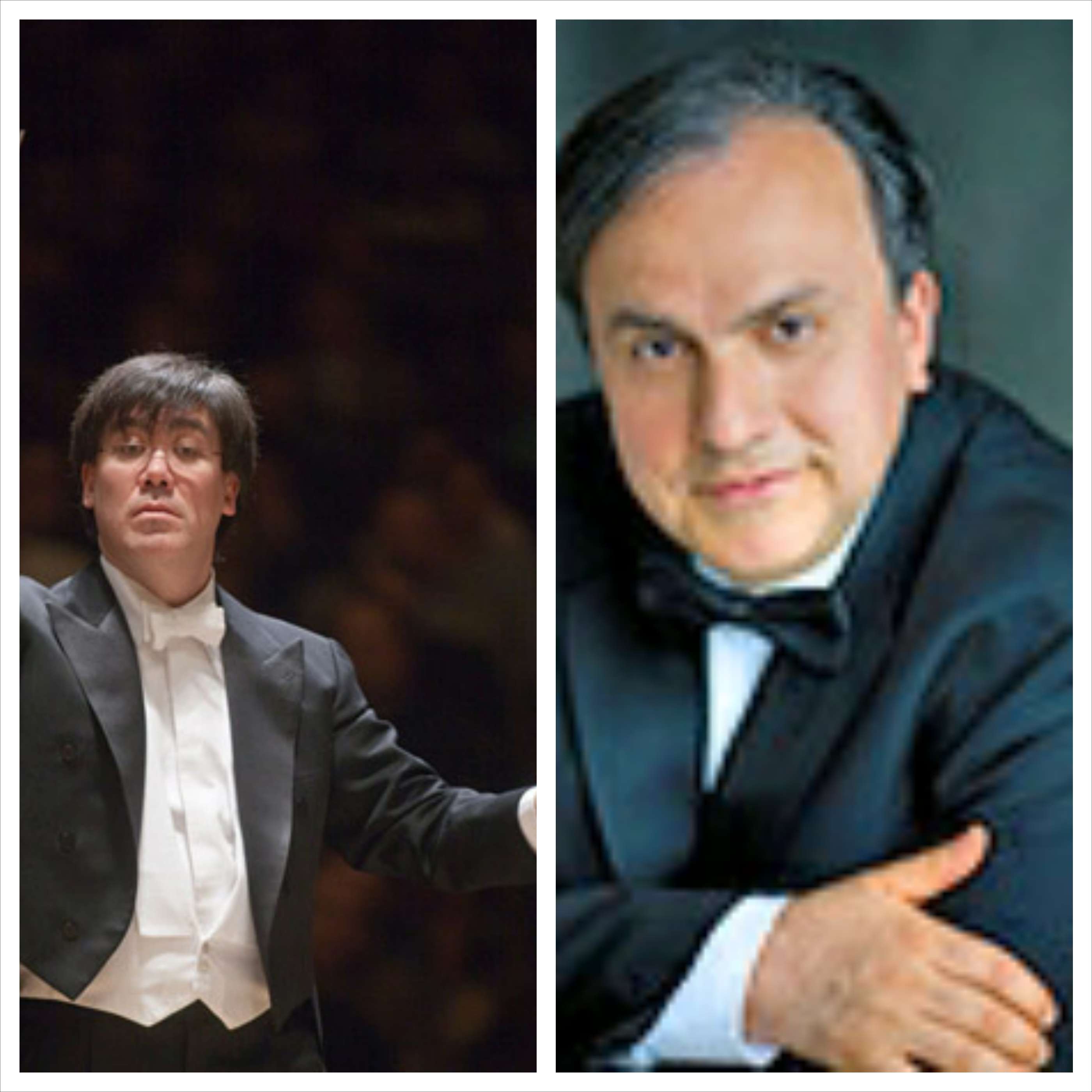|
Back
The Rapture and the Radiance New York
Avery Fisher Hall, Lincoln Center
01/02/2014 - & January 3, 4, 2014
Christopher Rouse: Rapture
Magnus Lindberg:Piano Concerto No. 2
Peter Ilych Tchaikovsky: Symphony No. 5, Opus 64
Yefim Bronfman (Pianist)
New York Philharmonic, Alan Gilbert (Conductor)

C.Rouse/M. Lindberg (© Jeffrey Herman/Courtesy of the artist)
Not even an impending snowstorm could prevent an almost-full Avery Fisher Hall last night. Probably the name Yefim Bronfman was the magnet. But the two live composers were equal drawing points.
Christopher Rouse and Magnus Lindberg are from two different countries, but the American and the Finn have one linking tie. Both have been composers-in-residence with the New York Philharmonic, both are extraordinary in their range of musical goals, and neither could ever be classified or type-cast.
Mr. Rouse does indeed wear his emotional heart on his sleeve, and the emotional pull of Iscariot and the Phil’s performance of Phantasmata and Prospero’s Room show his mastery of the demonic, the ugly and the hallucinatory.
Last night, the 11-minute Rapture was Mr. Rouse’s picture of “spiritual bliss”, not the rapture of any particular religion. As so many composers have noted, that sort of ecstasy can’t be hidden in tone rows but must come right out in the open, and Mr. Rouse never shied away from pure tonality (give or take a few dissonances in the winds).
The start could have come from an Elgar seascape, with a twist of Sibelius fog. From here, Mr. Rouse gave his rapture an accelerated pace, becoming faster and faster. One didn’t have the feeling of a drug-induced “high”, but of a purely orchestral sense of becoming more and more involved and excited.
The second work was more complex in one way, more showy in another. I had heard the Second Piano Concerto at its premiere a year-and-a-half ago, and while its themes never stayed with me, the vivacity, joy and unending explosions from the piano have been jolting memories.

A. Gilbert/Y. Bronfman (© Jeffrey Herman/Dario Acosta)
Having Yefim Bronfman as the artist–he gave the first performance two years ago, has played it several times since, and recorded it with the Phil–is a gift which any composer would envy.
Paranthetically, the opposite of Mr. Bronfman being offered the Lindberg piece would have been Paganini, who refused to play Berlioz’ Harold in Italy, because there wasn’t enough for him to do. That was certainly not the case with Mr. Lindberg’s spectacular uninterrupted 30-minute work. From the first rumbles down in the bass to non-stop runs up and down the scale, to glittering chordal passages, the Bronfman touch was as glorious last night as at the premiere performance.
Mr. Lindberg loves the orchestra, and this was a massive ensemble. But the notes (I would love to know how many!) were solely for the piano. Every so often, the full orchestra would come in with an organ-like heraldic fanfare. The themes also were definable in their variations. But nobody except other composers would worry about that.
Hardly 20 seconds into the work, Mr. Bronfman began to essay those intricate, involved torrential marathons up and down the octaves. The complexities were as arduous as the tempos, but the sounds were ravishingly beautiful. Mr. Lindberg had noted that the work has a cadenza. Perhaps he meant a thirty--minute cadenza for the pianist.
Mr. Bronfman himself has noted that much of the score seemed initially to be “unplayable.” But, in his typically down-to-earth explanation, the pianist explained, “Composers write what they want, and I’m happy to be the medium to try to incorporate it into performance. That’s my job, and that’s how I always work.”
Quite a job, quite a work, an experience not mesmeric but electrifying.
Finally, one must unhappily note that, for all his eclectic Harvard scholarship, Maestro Gilbert probably never learned that Peter Ilych Tchaikovsky was melancholy, morbid, suicidal, depressed and just plain pathétique. For when Alan Gilbert conducts a Tchaikovsky symphony, he offers a three-ring Barnum-and-Bailey circus.
That was true last season in a rambunctious Fourth Symphony and was evident last night in the Fifth. Yes, that “fate” motif was lachrymose to start with. After that, though, Mr. Gilbert urged his orchestra (as if they needed any urging!) through a glorious rousing performance, a “Tchaikovsky without tears.” He emphasized the anima in the Allegro con anima, and played the Andante with the fluidity of a Mozart aria. When Mr. Gilbert came to the finale, one could only guess that this was an arrangement by John Philip Sousa, for the brass and winds blazoned out with a triumph that the composer might have rebelled from.
This was marching-band stuff, victorious stuff, not an old warhorse but a galloping stallion, which Mr. Gilbert whipped on to victory.
As for those rare souls longing to hear the self-pitying Tchaikovsky...well, they would just have to trudge through the outside snowdrifts alone.
Harry Rolnick
|